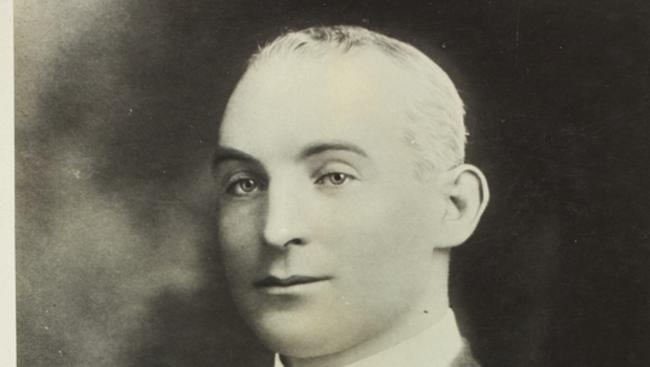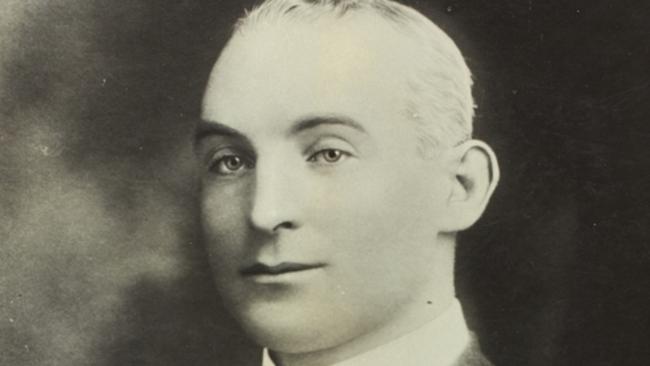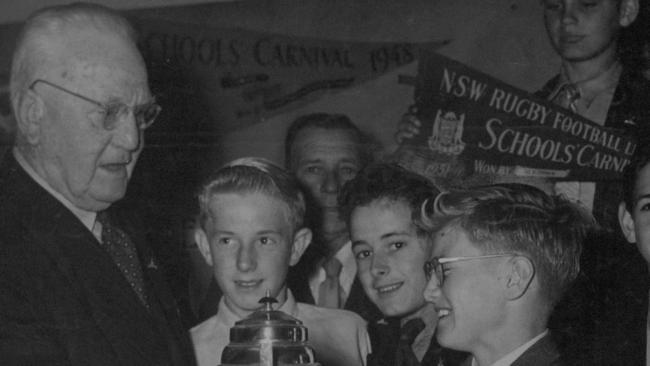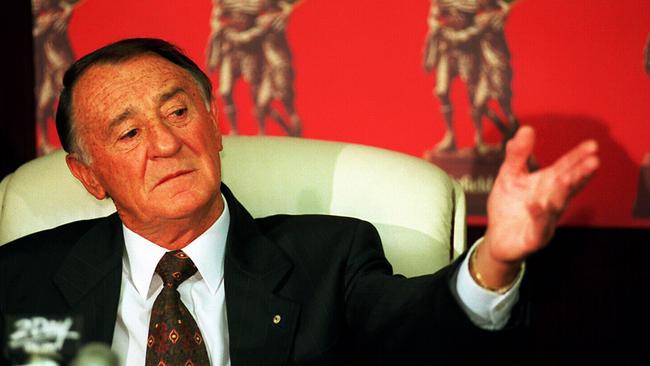Ex NRL CEO David Smith latest rugby league boss to leave before half time
Behind closed doors the administrative challenges for rugby league have often been as tough as the on-field action.

Today in History
Don't miss out on the headlines from Today in History. Followed categories will be added to My News.
Fans have flocked to watched the on-field rough and tumble of Australian rugby league since it was born in 1907. But behind closed doors the administrative challenges have often been as tough as the on-field action.
For every long-termed running Australia’s rugby league governing bodies, there have been those who stayed only a short time in the job, brought down by politics or new directions for the game.
Dave Smith’s resignation as CEO of the National Rugby League yesterday comes after less than three years leading the game.
Key figures in the rugby league hot seat since 1907 have included:
Henry Hoyle: Elected president of the freshly minted New South Wales Rugby Football League at a meeting in 1907, Hoyle had a varied background. He worked in a sawmill, as a blacksmith, on the docks and the railways, which led him into becoming a union organiser then a politician. Under Hoyle the league nearly went bankrupt and he was ousted along with secretary J.J. Giltinan in 1909 in favour of Ernest Broughton as president and Ed Larkin as secretary.
James Joseph “J.J.” Giltinan: As one of the founders and first secretary of the league, sporting entrepreneur Giltinan was instrumental in the first Kangaroo tour. After being sacked in 1909 he became more involved in yachting, but retained a connection with league. The shield still awarded to the minor premiers was named in his honour.

Edward “Ted” Larkin: While Ernest Broughton was president of the league from 1909 until 1910 followed by the nominal presidency of James Joynton Smith, secretary Ted Larkin was the driving force from 1909 until 1914. Larkin was a police officer who had played rugby up to national level before joining the force. As head of the league, he brought it back into the black. In 1914 he resigned and joined the army. He was killed on April 25, 1915, at Gallipoli.
Horrie Miller: Appointed secretary in 1914, Miller served in that role up until 1946, serving jointly on the Australian Rugby League Board of Control when it was established in 1924. A former champion runner and player Miller was passionate about the code and is credited with calling it “the greatest game of all”. He was sacked controversially when he failed to account for £80.
Harry Jersey Flegg: Flegg played for Eastern Suburbs in 1908-09 before becoming a selector and manager. In 1929 succeeded nominal president James Joynton Smith as president of the league. Taking a more active role than his predecessor, he kept the game afloat during the Great Depression. From 1940 he jointly served as president and head of the Australian Board of Control of Rugby League, remaining boss until his death in 1960.

John Quayle: A former league player with both Easts, Parramatta, NSW and Australia Quayle retired from playing in the 1970s due to injury. After successfully managing the Easts club, he helped reorganise management of the sport, becoming the first general manager of an incorporated NSWRL. From 1983 to 1996 Quayle helped professionalise league administration and expanded the competition interstate. He resigned during the Super League war to help smooth the path to reunification.
Ken Arthurson: A promising halfback for Manly before an accident put an early end to his career, he moved on to coaching then club secretary before his appointment as chairman of the newly formed Australian Rugby League. He presided over the sport during the Superleague War of the 1990s, resigning in 1997 to make way for the new National Rugby League (NRL).

Neil Whittaker: Former Balmain tiger Whittaker took over as CEO of the NRL in 1997 and helped reorganise the game in the wake of the Superleague split, dropping some of the new teams created. He resigned in 1998.
Dave Moffett: Moffett had a background in waste management before moving into administration in the NSW Rugby Union and the New Zealand Rugby Union before taking over the NRL in 1999. Having to rationalise the game he reduced the number of teams and dropped South Sydney. He resigned and left the job in 2001.
David Gallop: Taking over in 2002, Gallop had been involved in the legalities of the Super League war. He spent 10 years as head of the NRL, presiding over two of the competition’s biggest salary cap scandals, one in 2002 that saw the Bulldogs stripped of their points and another in 2010 that resulted in the Melbourne Storm being stripped of two premierships. He agreed to leave the job in 2012 when the Australian Rugby League Commission decided “the game needs a different style of leadership.”
Dave Smith: With a background in banking, Smith once played rugby union in Wales. He took over in 2013 and says he leaves the league “financially strong, organisationally sound” and has “strengthened the game’s connection to the fans.”
Originally published as Ex NRL CEO David Smith latest rugby league boss to leave before half time



